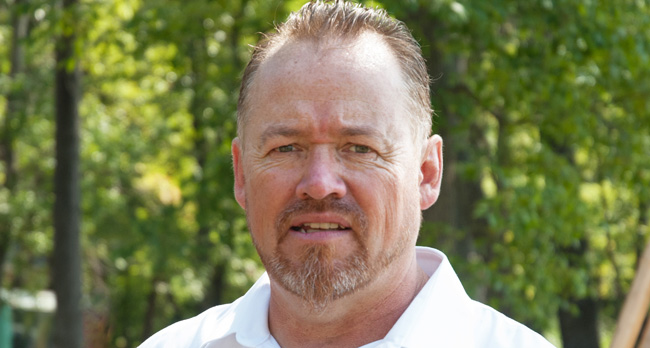Ontario recognizes Nipissing First Nation’s Fisheries Law

The Nipissing First Nation (NFN) Chief and Council moved forward with a Memorandum of Understanding (MOU) with the Ministry of Natural Resources and Forestry (MNRF) on March 10, 2016.
The MOU will enable the ministry to support the successful implementation of Nipissing First Nation’s Fisheries Law, which has been in place since 2006, and will help manage the community’s commercial fishing activities by supporting and developing their technical and financial capacity. This MOU establishes a new relationship between NFN and the MNRF by continuing on the path of reconciliation and good faith through discussions between both parties about Aboriginal restorative justice, recognition of the NFN Chi-Naaknigewin (constitution). It also seeks to rebuild the parties’ relationship, which has been frustrated by historical government policies and actions.
Nipissing First Nation Chief Scott McLeod stated:
“This is an important step to managing our resources at a sustainable level by protecting the fish and our inherent and treaty rights in order to access them for future generations.
“We don’t plan on stopping here: we are going to look at other aspects and push for sustainable changes in the recreational fishery.”
This new relationship enables the provision of financial and technical resources to NFN to support the commitments described within the MOU, including enhanced data exchange, harvest reporting, fisheries assessment and monitoring, training, as well as compliance and enforcement protocols that support NFN’s Fisheries Law and use principles of Aboriginal restorative justice.
The Fisheries Law requires NFN band members who fish commercially to obtain a permit in accordance with regulations enacted under this law. On a yearly basis, NFN Chief and Council by resolution set regulations that include the following:
- Fishing areas;
- Fishing season;
- Species, size and quantities;
- Reporting and assessment requirements; and
- Fishing gear.
The NFN Fisheries Law defines a “Commercial Fisherman” as a band member who meets one or more of the following criteria:
- Individual that is registered as a commercial fisherman with NFN;
- Individual that sells fish or intends to sell fish;
- Individual that sets two or more panels of nets in a single night without notifying the fisheries department, or sets nets more than 3 consecutive nights in a 7 day span;
- Individual that compensates people to fish on behalf of his equipment; or
- Individual that purchases, trades for, or is given fish for re-sale.
In August 2015, newly elected Chief McLeod and Council closed the commercial walleye fishery early due to data showing that safe harvest levels had been exceeded. The closure effectively reduced the season from seven months to three. Chief McLeod emphasized that “this is not a decision that is taken lightly. We understand it directly affects the membership.” The closure will remain in effect until the end of the 2016 spring fisheries moratorium.
Nipissing First Nation has been in discussions with the MNRF for more than a year, and both parties were looking to come to an understanding on how they can work together to best manage the fishery. According to a February 2016 NFN Notice to Membership, Chief and Council had two choices – “rely on the status quo to manage our fishery going forward, which has not been an effective and accountable method for our members,” or “work in partnership with the ministry to manage the lake and move towards a more sustainable fishery while supporting the implementation of our own Fisheries Law and management plans.”
The notice stated that Chief and Council chose the second option and referred to it as being in the best interests of the fish, the community and the collective rights of Nipissing people for now and future generations.
The Nipissing community began taking steps to manage and protect its fishery resource in response to growing concern over resource depletion and threatened fishery stocks, especially walleye, in Lake Nipissing.
Recommendations were sanctioned by Chief and Council through new regulations that came into effect in 2015, and included:
- Eliminating spear fishing and gill netting during the spring spawn;
- Changing the opening date of the commercial fishery season to coincide with the opening of the sports fishery season–(May 21, 2016);
- Reducing number of nets from 5 panels to 3 panels;
- Changing the minimum mesh size from 3.5 inches to 3.75 inches;
- Reinstituting the fish hatchery on a small experimental scale, hiring fishermen to seed a barren spawning grounds and studying the impact over a number of years;
- Enhancing training opportunities for staff to enhance enforcement and subsequent follow up (Restorative Justice Program);
- Mandating closing the season when target number is reached, and working with the Ministry of Natural Resources & Forestry (MNRF) to find a mutually acceptable approach to managing the fishery;
- Withdrawing licenses from any crews using non-members as part of fishing crews.
- Actively patrolling and confiscating all unmarked nets; and
- Seeking legal advice to use the Chi-Naaknigewin (Constitution) to strengthen our laws.
Please refer to www.nfn.ca for more information about NFN’s Fisheries Law and regulations.


